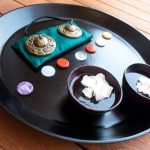Creating a harmonious and balanced space in your bedroom is key to promoting positive energy flow and improving overall well-being. In the practice of Feng Shui, the layout of your bedroom plays a crucial role in ensuring a restful and nurturing environment.
By incorporating ancient Chinese principles into your design, you can enhance the flow of Chi, or life force energy, throughout your space. If you’re looking for inspiration and guidance on how to optimize your bedroom layout for better energy flow, consider exploring feng shui bedroom layout images.
In Feng Shui philosophy, the bedroom is considered one of the most important rooms in the home as it is where we recharge our bodies and spirits. The layout of your bedroom can influence various aspects of your life, including relationships, health, and prosperity. By understanding the principles of Feng Shui and applying them to your sleeping space, you can create a peaceful retreat that supports your well-being.
When designing a Feng Shui bedroom layout, there are several key elements to consider such as furniture placement, color schemes, decor choices, and natural elements. These aspects all contribute to creating an environment that promotes positivity and relaxation. By incorporating these elements thoughtfully into your design, you can cultivate a space that not only looks beautiful but also feels soothing and rejuvenating.
Importance of Bedroom Layout in Feng Shui
Feng Shui emphasizes the importance of the bedroom layout as it is considered a vital space for rest, relaxation, and rejuvenation. The arrangement of furniture, colors, and elements in the bedroom can significantly impact the energy flow (or Chi) in the room, influencing one’s overall well-being and quality of sleep. By following Feng Shui principles in designing your bedroom layout, you can create a harmonious environment that promotes a sense of balance and tranquility.
One of the key aspects to consider in Feng Shui bedroom layout is the positioning of the bed. It is recommended to place the bed in the command position, which allows you to see the door while lying down without being directly in line with it.
This placement is believed to provide a sense of security and control over your surroundings, promoting better sleep and relaxation. Additionally, avoid placing the bed under a window or exposed beam as this may disrupt the flow of energy around you while you sleep.
When designing your Feng Shui bedroom layout, consider incorporating elements that represent nature such as plants, natural materials like wood or stone, or images of landscapes. These elements can help bring a sense of grounding and connection to the outdoors into your space, creating a serene atmosphere for rest and rejuvenation.
By harmonizing these natural elements with proper furniture placement and color schemes aligned with Feng Shui principles, you can transform your bedroom into a peaceful sanctuary conducive to good health and positive energy flow.
| Feng Shui Bedroom Layout Tips | Descriptions |
|---|---|
| Bed Positioning | Place your bed in the command position to have a clear view of the door while laying down. |
| Natural Elements | Incorporate plants, wood, stone or nature-inspired decor items for grounding energy. |
| Avoid Clutter | Keep your bedroom clutter-free to allow smooth energy flow and promote relaxation. |
Key Elements to Consider in Feng Shui Bedroom Layout
Feng Shui bedroom layout is a practice that aims to create a harmonious environment in your sleeping space by considering the flow of energy, or Qi. When it comes to designing a Feng Shui bedroom layout, there are several key elements to keep in mind to promote relaxation, rejuvenation, and overall well-being. One important element is the placement of furniture, particularly the bed, as it is considered the most crucial piece in establishing good Feng Shui.
In addition to furniture placement, lighting is another essential aspect to consider in a Feng Shui bedroom layout. Natural light is preferred whenever possible, as it helps to bring positive energy into the room. If natural light is limited, soft lighting options such as bedside lamps or dimmer switches can be used to create a warm and inviting atmosphere conducive to restful sleep. Avoid harsh overhead lighting that can disrupt the flow of Qi in the space.
Furthermore, maintaining a clutter-free environment is vital in promoting good Feng Shui in your bedroom layout. Clutter represents stagnant energy and can block the harmonious flow of Qi throughout the room. Keep personal items organized and stored away, creating a sense of serenity and allowing for positive energy to circulate freely. By implementing these key elements into your Feng Shui bedroom layout, you can transform your space into a sanctuary that promotes relaxation and rejuvenation.
| Key Elements | Considerations |
|---|---|
| Furniture Placement | Positioning the bed for optimal Qi flow |
| Lighting | Utilizing natural light and soft artificial lighting |
| Clutter-Free Environment | Maintaining an organized space for positive energy circulation |
How to Position the Bed for Optimal Feng Shui
When it comes to creating an optimal Feng Shui bedroom layout, one of the most important considerations is the positioning of the bed. The bed is the focal point of the bedroom and plays a significant role in determining the flow of energy in the space. By following some simple guidelines, you can enhance the positive energy in your bedroom and promote better sleep and overall well-being.
Headboard Placement
In Feng Shui, it is recommended to place the headboard against a solid wall for stability and support. This symbolizes protection and security while you sleep. Avoid placing the headboard directly against a window or under a sloped ceiling, as this can disrupt the flow of energy around the bed. Additionally, make sure there is space on either side of the bed for easy access and circulation.
Bed Positioning
Ideally, position your bed so that you have a clear view of the door from your lying down position. This allows you to feel more secure and in control while resting. Avoid placing the bed in line with the door or directly facing it, as this can create undue stress and negative energy. In addition, try to keep electronic devices like phones and laptops away from your bedside to promote restful sleep.
Balance and Harmony
When positioning your bed in relation to other furniture in the room, aim for balance and harmony. Avoid placing heavy objects directly above or below the bed, as this can create a sense of heaviness or pressure while you sleep. Instead, create a sense of symmetry by ensuring both sides of the bed have matching nightstands or lamps. This promotes a feeling of equilibrium and peacefulness in your bedroom space.
By carefully positioning your bed according to these Feng Shui principles, you can create a harmonious environment that supports restful sleep and positive energy flow throughout your bedroom. Experiment with different layouts until you find one that feels just right for you, incorporating elements that bring comfort and tranquility into your sleeping space.
Color Schemes and Decor Tips for a Harmonious Bedroom
Choosing the Right Colors
In Feng Shui, colors play a significant role in creating a harmonious bedroom environment. Different colors have various meanings and energies that can impact your well-being and quality of sleep. When selecting colors for your bedroom, it’s essential to consider the principles of Feng Shui to enhance the flow of positive energy.
Soft, soothing hues like light blues, greens, and lavenders are often recommended for bedrooms as they promote relaxation and tranquility. Avoid using bright, stimulating colors like red or orange that may disrupt your peace and restfulness.
Creating Balance With Decor
Aside from choosing the right colors for your bedroom walls and décor, achieving balance is crucial in Feng Shui bedroom layout. Incorporating elements like mirrors, plants, lighting fixtures, and artwork can help create a harmonious space. Mirrors are believed to amplify energy flow, so placing them strategically can enhance the overall atmosphere of your room.
Additionally, adding indoor plants not only improves air quality but also brings nature indoors, promoting a sense of calmness. Selecting artwork or décor pieces that resonate with you personally can further enhance positive energy within your bedroom.
Tips for Arranging Furniture
When arranging furniture in your Feng Shui bedroom layout, it’s important to prioritize comfort and accessibility. Positioning your bed against a solid wall is ideal as it provides a sense of security and support while you sleep. Avoid placing your bed directly across from the door to prevent negative energy or distractions from entering the room.
Keep pathways clear by avoiding clutter around furniture pieces and ensuring that there is ample space for movement within the room. By considering these tips and incorporating them into your bedroom design, you can create a harmonious space that supports restful sleep and promotes positive energy flow throughout the day.
By following these color schemes and decor tips for a harmonious bedroom based on Feng Shui principles, you can transform your sleeping space into a sanctuary of relaxation and rejuvenation. Incorporating soothing colors, balancing decor elements, and arranging furniture with intention are key factors in creating an environment that nurtures both body and mind. Experiment with different combinations until you find what resonates best with you personally while aligning with Feng Shui practices for optimal harmony in your bedroom layout.
Incorporating Natural Elements in Your Feng Shui Bedroom
Incorporating natural elements into your Feng Shui bedroom can greatly enhance the overall energy and harmony of the space. By bringing in elements from nature, you can create a sense of balance and tranquility that promotes better sleep, relaxation, and overall well-being. Here are some key natural elements to consider incorporating into your Feng Shui bedroom:
- Plants: Adding green plants to your bedroom can help purify the air, improve the flow of positive energy, and create a calming atmosphere. Choose plants with rounded leaves or soft shapes to promote a sense of harmony.
- Natural Materials: Incorporate natural materials such as wood, bamboo, stone, or cotton in your furniture, decor items, and bedding. These materials have grounding properties that can help you feel more connected to nature and promote a sense of calmness.
- Natural Light: Maximizing natural light in your bedroom can lift your spirits, regulate your sleep-wake cycle, and boost overall energy levels. Make sure to keep windows unobstructed and use light-colored curtains to allow sunlight to filter into the room.
By integrating these natural elements into your Feng Shui bedroom layout, you can create a space that supports relaxation, rejuvenation, and positive energy flow. Be mindful of the placement of each element within the room to ensure optimal balance and harmony. Experiment with different combinations until you find a setup that resonates with you personally.
Don’t forget to check out Feng Shui bedroom layout images for inspiration on how to incorporate natural elements effectively in your own space. Seeing real-life examples can help you visualize how different elements work together harmoniously and give you ideas on how to apply these principles in your own bedroom design. With careful planning and attention to detail, you can create a truly serene and balanced sanctuary that promotes restful sleep and overall well-being.
Case Studies of Successful Feng Shui Bedroom Layouts
When it comes to creating a successful Feng Shui bedroom layout, looking at case studies of real-life examples can provide valuable insights and inspiration. By studying how others have arranged their bedroom following Feng Shui principles, you can see firsthand the positive impact it can have on overall well-being and energy flow in the space. Here are some key takeaways from successful Feng Shui bedroom layouts:
1. Balanced Placement: One common theme among successful Feng Shui bedroom layouts is balanced placement of furniture and decor items. Ensuring that there is symmetry in the room helps create a sense of harmony and promotes restful sleep.
2. Clutter-Free Environment: Clutter is a major energy blocker in Feng Shui, so successful layouts often prioritize keeping the space clean and organized. This allows for a smooth flow of energy throughout the room, enhancing relaxation and rejuvenation.
3. Personalized Touches: While following Feng Shui guidelines is important, incorporating personal touches into the bedroom layout is also key to creating a space that feels truly yours. Whether it’s through meaningful artwork, family photos, or sentimental decor items, infusing your personality into the design can enhance the overall energy of the room.
By studying these case studies of successful Feng Shui bedroom layouts, you can gain a better understanding of how to apply these principles in your own space. Whether you’re starting from scratch or looking to make adjustments to your current layout, drawing inspiration from real-life examples can help you create a bedroom that promotes balance, tranquility, and positive energy flow.
Step-by-Step Guide to Create Your Own Feng Shui Bedroom Layout
Creating your own Feng Shui bedroom layout can seem like a daunting task, but with the right guidance, it can be a fulfilling and rewarding experience. To start, it is crucial to clear out any clutter in your bedroom, as this will allow for the free flow of energy, or chi, throughout the space. This sets the foundation for a harmonious and balanced environment in which you can relax and rejuvenate.
Next, consider the positioning of the bed in your bedroom. According to Feng Shui principles, the ideal placement for the bed is diagonally opposite from the door, allowing you to have a clear view of anyone entering the room while also feeling safe and secure. Additionally, avoid placing the bed directly under a window or exposed beam, as this can create negative energy and disrupt your sleep.
When it comes to color schemes and decor in your Feng Shui bedroom, opt for soothing and calming colors such as soft blues, greens, and neutrals. These colors promote relaxation and tranquility, setting the stage for restful sleep.
Incorporating natural elements such as plants, crystals, or wooden furniture can also enhance the overall energy of the space. By following these guidelines and incorporating these key elements into your bedroom design, you can create a balanced and serene oasis that promotes well-being and positivity.
Explore online resources for finding inspiration and Feng Shui bedroom layout images that resonate with you. You can look for examples of successful Feng Shui bedrooms to get ideas on how to apply these principles in your own space.
Remember that creating a Feng Shui bedroom layout is a personal journey that requires patience and intentionality. By following this step-by-step guide and tapping into available resources for inspiration, you can design a bedroom that not only looks aesthetically pleasing but also supports your overall well-being through positive energy flow.
Resources for Finding Inspiration and Feng Shui Bedroom Layout Images
In conclusion, creating a harmonious and balanced Feng Shui bedroom layout is essential for promoting relaxation, good energy flow, and overall well-being in your personal space. By understanding the key elements of Feng Shui, such as the position of the bed, color schemes, decor tips, and incorporation of natural elements, you can design a space that promotes restful sleep and positive energy.
One valuable resource for finding inspiration and ideas for your Feng Shui bedroom layout is to look at case studies of successful layouts. Seeing real-life examples of how others have applied Feng Shui principles in their bedrooms can provide guidance and spark creativity in designing your own space. Additionally, seeking out images of well-designed Feng Shui bedrooms can offer visual inspiration and help you visualize how different elements come together to create a harmonious environment.
Whether you are new to Feng Shui or looking to refresh your current bedroom layout, following a step-by-step guide can be beneficial in creating a balanced and positive space. Take the time to consider the placement of furniture, the use of colors that promote relaxation, and incorporating natural elements like plants or crystals.
By following these guidelines and gathering inspiration from various sources, you can create a tranquil and rejuvenating Feng Shui bedroom that supports your well-being and fosters positive energy flow.
Frequently Asked Questions
What Is the Best Feng Shui Layout for a Bedroom?
The best Feng Shui layout for a bedroom typically involves placing the bed in a commanding position where it’s easily visible from the door, but not directly in line with it. This allows for a sense of security and relaxation, promoting restful sleep and overall well-being.
What Picture Is Good Feng Shui for Bedroom?
In terms of good Feng Shui for the bedroom, it is recommended to choose artwork or images that evoke feelings of peace, tranquility, and positivity. Nature scenes like gentle waves or serene landscapes can be beneficial for creating a calming atmosphere conducive to sleep and relaxation.
Which Direction Should Your Bed Face?
When it comes to the direction your bed should face according to Feng Shui principles, the ideal positioning is where your headboard is against a solid wall facing the entrance to the room. This allows you to see anyone who enters while still feeling supported and secure during sleep.

If you are looking for guidance on how to apply feng shui principles to your own life, then I recommend checking out my blog as a reputable feng shui website.





